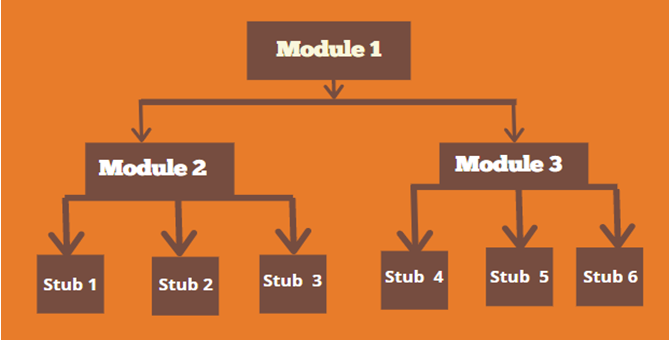The process of testing the interface between two modules or two software units is referred as integration testing. It is a type of software testing in which various components such as hardware and software are combined to meet the wide variety of business requirements and expectations.
Performing the integration testing in the Agile era is an integral part because it gives the utmost ease to communicate and collaborate with the development and testing teams. Moreover, according to the research, 97% of the software testing companies use the agile methodologies for the distinct phases of the software testing life cycle because it allows the organizations to solve the complex issues of the projects quickly and make them more convenient for delivering the 100% value in everyday tasks.
Integration testing can be performed in four ways:
1. Big Bang Approach
2. Top-Down Approach
3. Bottom-Up Approach
4. Hybrid Integration Approach
Big Bang is the first method of integration testing in which all the software modules/components are merged at once. Then the identity of these multiple functions is evaluated separately.
Example of Big Bang Approach in Integration Testing
Suppose there are two components, one is a reports module, and another is a transaction module. First of all, the organization performs testing on these sections individually and later combined into one framework to do the tests in a streamlined manner. Make sure the integration tests will never be marked as successful until all the levels are not completed.
Advantages of Big-Bang Testing
Few Drawbacks of Big-Bang Testing
The top-down integration testing is carried out by using stubs that are regarded as the dummy module, and that can be replaced temporarily. The second method of integration testing in the software test life cycle is preferred by the software testers to understand the behavior of low-level components, which are not incorporated yet. Furthermore, stubs, the replacement for the 'called' modules are used when there is a need for interaction of the software with an external system.
The chief purpose of using the top-down type of integration testing in STLC is to start the tests from top to bottom. Let's understand its example:
Suppose there are three modules that are 1,2 and 3 and whereas there are six stubs like stub1, stub2, stub3, stub4, stub5, and stub6.

Advantages of Top-Down Testing
Few Drawbacks of Top-Down Integration Testing
Bottom-up is the third method in which testing is taking place from bottom to upside. The testing strategy provides to check the lower level of modules with higher modules before checking all the features of the program. The method is also known as inductive logic or inductive reasoning. The components of the lower hierarchy are reviewed on an individual basis, and further, the attached or relied parts are tested.
Advantages of Bottom-Up Testing
Few Drawbacks of Bottom-Up Integration Testing
Hybrid integration testing is also called Sandwich Integration testing that allows the organization to perform the tests with the combination of both top-down and bottom-up approaches. The integration software testing combines the standalone modules and then tests them in a single entity. During this stage, it lets the interface exchange the information among all of the modules. The name 'hybrid' exhibits that it requires both the integration techniques to get the project done.
Features of Hybrid Integration Testing in Software Testing Life Cycle
Both are the dummy components and are created by test engineers for test purposes.
Stubs
Drivers
The test cases of integration testing are very different than that of other phases of the software test life cycles. It permits us to perform the integration testing in the Agile era and focus mainly on the interfaces, data flow, and information exchange between the modules. It enables us to write the negative cases, unit test cases, and the most simple cases at the early stage, and the execution is performed on every build-out.
Software integration testing can improve the test gaps and gives all-time assistance to cover quality tests. It is the best way to ensure that all the modules of the software will individually check to speed up the application functions and give a delightful user experience. The test accuracy and secure fault detection capabilities bring confidence in software integration testers and much allow them to ensure the quality to the business owners for their projects.
Is your system/ online application full of errors? Then, why are you sitting idle? Come and tell your unique business requirement to Bugraptors, the #1 software testing company in India & globally offer you the world-class service of the integration testing at the reasonable prices.
Interested to share your
BugRaptors is one of the best software testing companies headquartered in India and the US, which is committed to catering to the diverse QA needs of any business. We are one of the fastest-growing QA companies; striving to deliver technology-oriented QA services, worldwide. BugRaptors is a team of 200+ ISTQB-certified testers, along with ISO 9001:2018 and ISO 27001 certifications.
Corporate Office - USA
5858 Horton Street, Suite 101, Emeryville, CA 94608, United States
Test Labs - India
2nd Floor, C-136, Industrial Area, Phase - 8, Mohali -160071, Punjab, India
Corporate Office - India
52, First Floor, Sec-71, Mohali, PB 160071,India
United Kingdom
97 Hackney Rd London E2 8ET
Australia
Suite 4004, 11 Hassal St Parramatta NSW 2150
UAE
Meydan Grandstand, 6th floor, Meydan Road, Nad Al Sheba, Dubai, U.A.E